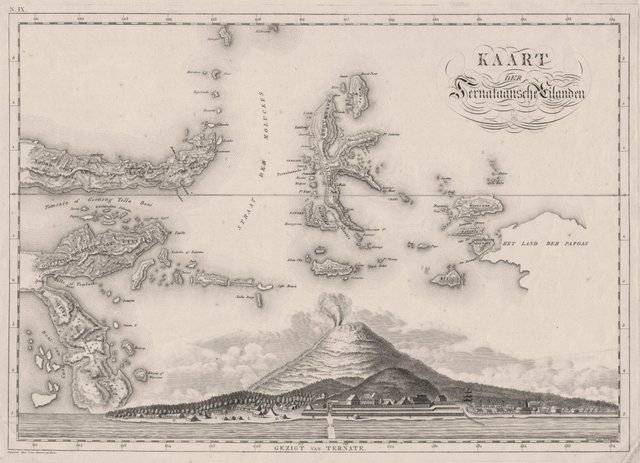Map of the Maluku Islands, 1818

Image: Cornelis van Baarsel/Atlas van Stolk
The Maluku (Moluccas) Islands was the center of the world's spice producers, and had been the axis of the world's spice trade for a long time. Its mainstay spices were cloves and nutmeg which were in demand by traders from the Archipelago, Arabia, China, and Europe. That's why Maluku was known as the Spice Islands. However, it was the natural wealth that then also brought disaster. The greed of Europeans who wanted to control the source of spices made Maluku a bone of contention.
World trade in the past was divided into two major routes, namely the silk route and the spice route. Uniquely, Maluku was traversed by the two major routes. Therefore, it is not surprising that many traders from all over the world visited Maluku. Arab, Gujarati, Persian and Chinese traders had visited Maluku long before the arrival of Europeans. This interaction with Arab traders allowed the people of the archipelago to learn the Arabic alphabet which was then absorbed into the Jawi alphabet. Also as one of the entrances to the spread of Islam in the archipelago.
There were four major kingdoms in Maluku, namely Ternate, Tidore, Bacan, and Jailolo. But the most influential were Ternate and Tidore. The rivalry between the two was fierce and paved the way for the establishment of European power in Maluku. The Portuguese, who in 1511 conquered Malacca, immediately went to Maluku and formed an alliance with Ternate. The presence of the Portuguese in the Maluku was followed by the arrival of Spain, which was allied with Tidore. The battle between Ternate-Portuguese and Tidore-Spain lasted several years before the Portuguese and Spanish signed the Saragosa Agreement which required Spain to leave the Maluku.
It wasn't until the turn of the century that the Dutch came to Maluku, followed by the British a few years later. The battle between Europeans in fighting over the Maluku spices was later won by the Dutch with their VOC. Portuguese and English also stepped aside. The VOC monopoly over Maluku spices was very detrimental to the local people, resulting in resistance that led to the outbreak of war for decades.
The picture above is a map of the Maluku Islands, especially the Ternate area, drawn by Cornelis van Baarsel and his son in 1818.